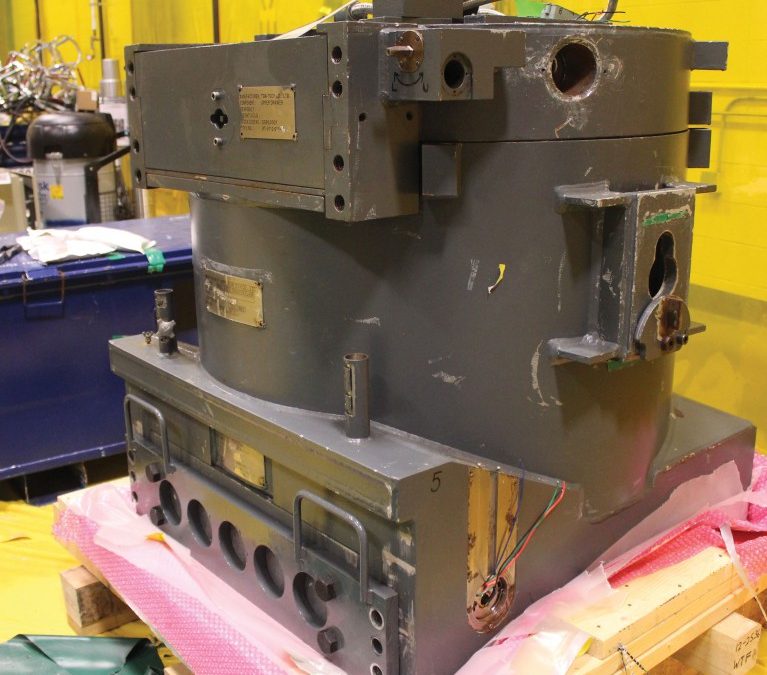UniTech Services Canada, Ltd. maintains a CNSC Waste Nuclear Substance License (WNSL). This license, #WNSL-W2-3800.0/2015, allows UniTech Canada to take title to materials at the customer site and then transport and export them to UniTech U.S. facilities for processing.
As of May, UniTech has decontaminated and released for unrestricted use over 1,000,000 pounds of tooling, crating and support materials.
15,000 lb. waste transfer flask (1 of 8) decontaminated and released from a Candu 6 mid-cycle rebuild tool set. 697 crates, 2.5M lbs. of UN2910 and UN2915 materials exported on 69 trucks.
Hand Frisking – New Techniques
The tool set project (see article above) delivered components of many diverse (some one-of-a-kind) shapes, with significant material weight. These factors demanded hand frisking for a major portion of survey work. In response, UniTech developed the next generation of hand frisking instruments. Using electronics from our Automated Laundry Monitor and breaking the channels into groups, UniTech developed a new series of hand frisking jigs. Each jig has a wheel or spacer to keep the detector-to-item survey distance consistent; multiple detectors configured for optimum item coverage to ensure 100% of each item is surveyed; computer-controlled alarm limit that establishes scan speed with a 95% confidence level (no more listening for “clicks”); unique detector shapes to minimize areas that cannot be adequately surveyed; and speed sensors to ensure relevant frisk rates are not too fast. These features minimize human error and optimize labor resources.

